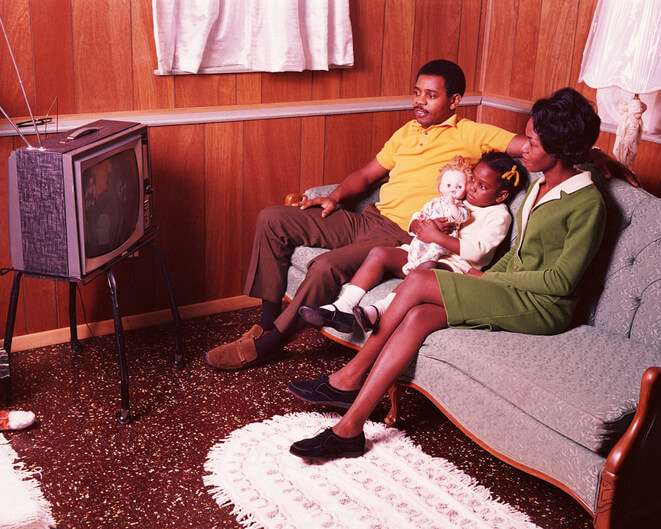Generation X has been called “the ignored generation,” wedged between the louder Boomers and the flashier Millennials, but its trailblazers shaped and continue to influence our world today. Who are Gen Xers? The definition varies depending on who you ask, but the Pew Research Center categorizes members of this generation as those born between 1965 and 1980, now numbering over 65 million in the United States. And although marketers and media often overlook Gen Xers, they lead the charge on many of the society-reshaping changes of the last five decades.
“Gen Xers laid the political, intellectual, social, creative and personal ground upon which the Millennials today walk, talk and text,” writes Christine Henseler, a professor at Union College in Schenectady, New York, and editor of “Generation X Goes Global: Mapping a Youth Culture in Motion.”
From tech to pop culture to innovation, here are six Gen X milestones that started all of us on the path we’re on today.
Gen X was the first generation to:
1. Grow Up Playing Video Games

Most adults who grew up in the 70s and 80s climbing trees, recall riding bikes and coming inside only when it got dark, but Gen X was also the first generation to spend at least a part of its childhood glued to an electronic device playing games. Though programmers created the first computerized blackjack game in 1954, it wasn’t until the early 1970s that Magnavox released the first home video game system. And in 1977, Atari released the Atari 2600, which created “millions of American home video game players.”
Today, there are 162 million video game console owners. Video games, and the gamer mindset, continue to have a big impact on U.S. culture, contributing to the growing demand for “interactivization” that we’re seeing today, even in areas as far removed from gaming as dining and theater.
2. Expect Programming on Demand

In the mid-to-late 1970s, Sony, Philips and JVC released the first home videocassette recorders (VCRs) that were affordable enough for average middle-class consumers. Suddenly, kids could record their favorite TV programs while they were at school or practice to watch later, and they could rent or buy movies to watch at home.
Although the technology behind the VCR is all but dead, the desire it created to watch what you want when you want has lived on and thrived. Fast forward (pun intended) to today, and we’ve upgraded from VCRs to DVRs and streaming services like Hulu and Netflix. Research found that 28 percent of U.S. adults regularly watch streaming content:
- 61 percent of adults aged 18-29
- 37 percent aged 30-49
One could easily make the claim that videocassettes started us on the path to today’s “on-demand culture.”
3. Be Raised on Cable News

Before the advent of cable news networks, many Gen Xers’ parents would turn on the TV in the evening to watch the news. But, the birth of CNN in 1980 made news available around the clock. CNN covered the explosion of the space shuttle Challenger in 1986, a defining moment in Gen Xers’ lives. And when the first Gulf War started in 1990, many of the same viewers stared at their screens as CNN reporters crouched under tables covering the story amid explosions.
CNN led the way to today’s 24-hour news cycle, in which news is reported and consumed throughout the entire day, and the spaces between newsworthy events are filled with talk shows and celebrity news. This, in turn, has led to a world in which we expect instant access to information and can even watch events unfold in real time via live Tweets from sources on the ground.
4. Want Their MTV

When MTV launched in 1981 with the music video for “Video Killed the Radio Star” by the Buggles, Gen Xers became hooked. They were the first generation that watched their music 24 hours a day. The birth of MTV made such an impact on youth culture at the time that Gen X was dubbed “The MTV Generation.”
A decade later, MTV launched the first reality TV show, “Real World.” MTV introduced new avenues for artistic expression, a signature edgy editing style and a fascination with celebrities. “The celebrity culture MTV introduced is probably one that still influences young kids quite a bit today,” says Henseler.
5. Bare Their Souls Online

Gen Xers pioneered blogging before the practice even had a name. In 1994, Swarthmore College student Justin Hall (a.k.a. the “founding father” of blogging) started a personal site, Links.net, where he shared links and wrote about his family, his travels and his love life.
Other Gen Xers, and some Boomers, rolled out blogs of their own, helping to popularize the medium. This democratization of expression helped individuals harness the power of voice and storytelling to drive social change toward a more open society, says Henseler, citing the progress in race relations and same-sex marriage over the last few decades as evidence. “Generation X was part of the hard work of that transformation, and Millennials get to live it,” she says.
6. Socialize Digitally

Millennials and social media are often mentioned in the same breath, but Gen Xers, the first generation to grow up with access to home computers, socialized online as teens and young adults via online bulletin boards and email discussion groups powered by LISTSERVs. Later, Gen Xers founded some of the first social media platforms, including Friendster in 2002, MySpace in 2003 and Twitter in 2006. In fact, Friendster served as a model for Facebook, founded in 2004 by Millennial Mark Zuckerberg. And those earlier social media platforms paved the way for Instagram and Pinterest, both launched in 2010.
When it comes to their role in shaping the social media landscape of today, Gen Xers don’t get enough credit, says Robert Tanner, founder of Business Consulting Solutions, a consulting group that focuses on the human side of business, including generational differences. “When you look at a lot of founders and people who are instruments of change, they are Gen Xers,” he says.
Gen X, the Innovation Generation

Given their tech savvy beginnings, it’s no surprise that Gen Xers founded Google, Amazon (if you count Jeff Bezos, born in 1964, as a Gen Xer) and other entities that shape life in the United States today. “We are the first generation to engage with technology from an early age,” says Henseler, who’s also a Gen Xer. “We’ve grown up and become adults with these rapidly changing technologies that began in 80s and 90s. We’re also the drivers of these technologies in the world, leading to great transformation.”
In fact, the State of the Startup report from Sage, released in 2015, found that more than half of startup founders (55%) are Generation Xers, with this generation more likely than any other to start a business. Gen Xers “overwhelmingly dominate the playing field” when it comes to new businesses, according to the report.
“They have a lot of entrepreneurial spirit, and that reflects how they’ve had to pretty much make it through life,” says Tanner, citing the fact that many Gen Xers were “latchkey kids” and saw high rates of divorce amongst their parents. “They’re very savvy, very independent,” he says.
Taking on Positions of Authority

Today, members of Generation X are moving up the corporate ladder, so they may soon get more attention, says Tanner. “Now that they’re becoming the big bosses, people have to pay attention,” he says. “The power dynamic has changed.”
Generation X has always been seen as a youth culture, and it’s still a youth culture, but it’s growing up, says Henseler. “We’ve matured — and we’re still maturing — and, in the process, taking on positions of authority,” she says. “We’re deciding how we want to change and transform the world.”
Tanner agrees: “There’s something to be said for new ways of thinking and the energy and zeal of youth, but there’s also something to be said for experience,” he says. “Gen Xers have both.”







I see people saying that Gen X started in 1965. That’s totally arbitrary. I was born in 1964. A “Boomer” is a from the post WW2 baby boom. My parents were 3 years old when WW2 ended. How am I a “boomer?” I have always identified more with Gen X in general terms.
Apps and programs aren’t really inventions. Where are the inventions?
Bezos is a boomer. I see lots of experiences here, but no achievements.
As a Gen Xer, all this seams to be true. Don’t forget pagers and cellular phones, Xers grew up with both!
Cnn news around the 24 hour clock on current events mostly impacted my life.